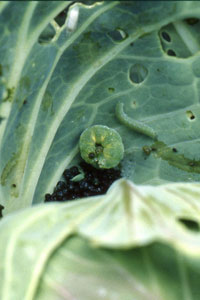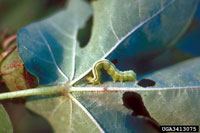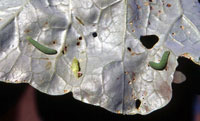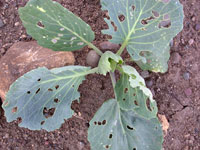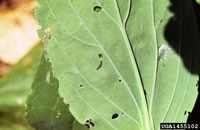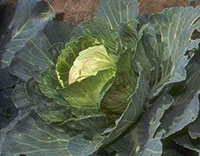Extension > Garden > Diagnose a problem > What's wrong with my plant? > Vegetable > Cauliflower > Holes or split in head
Cauliflower > Head > Holes or split in head
1 of 5
Cabbage Looper
Trichoplusia ni
- Larvae feed on leaves resulting in large ragged holes
- Severely defoliated plants may not form a head
- Dark green larva excrement may be present
- Larvae are up to 1 ½ inches in length, light green, and move in a characteristic “looping” action
- Present from early July to late August
- More information on Cabbage Looper
2 of 5
Imported Cabbageworm
Artogeia rapae
- Larvae feed on leaves causing irregularly shaped holes
- Larvae are up to 1 inch in length, velvety green in color with faint yellow stripes running longitudinally on the back and sides
- Larvae are present throughout the growing season
- Brown larva excrement may be present
- More information on Imported Cabbageworm
3 of 5
Diamondback Moth
Plutella xylostella
- Larvae feed on leaves, turning tissue opaque/white color
- Affected tissue eventually falls out resulting in small holes
- Larvae feed on developing heads which can cause deformities
- Larvae are up to 1/3 inch and pale green in color
- Present throughout the growing season
- More information on Diamondback Moth
4 of 5
Bird Damage
- Birds peck at heads looking for insects
- Head may appear shredded in the center
5 of 5
Head Splitting
- May be caused by heavy rain following drought
- Excessive fertilizer may cause head to split
- Split may start small and expand across the head



